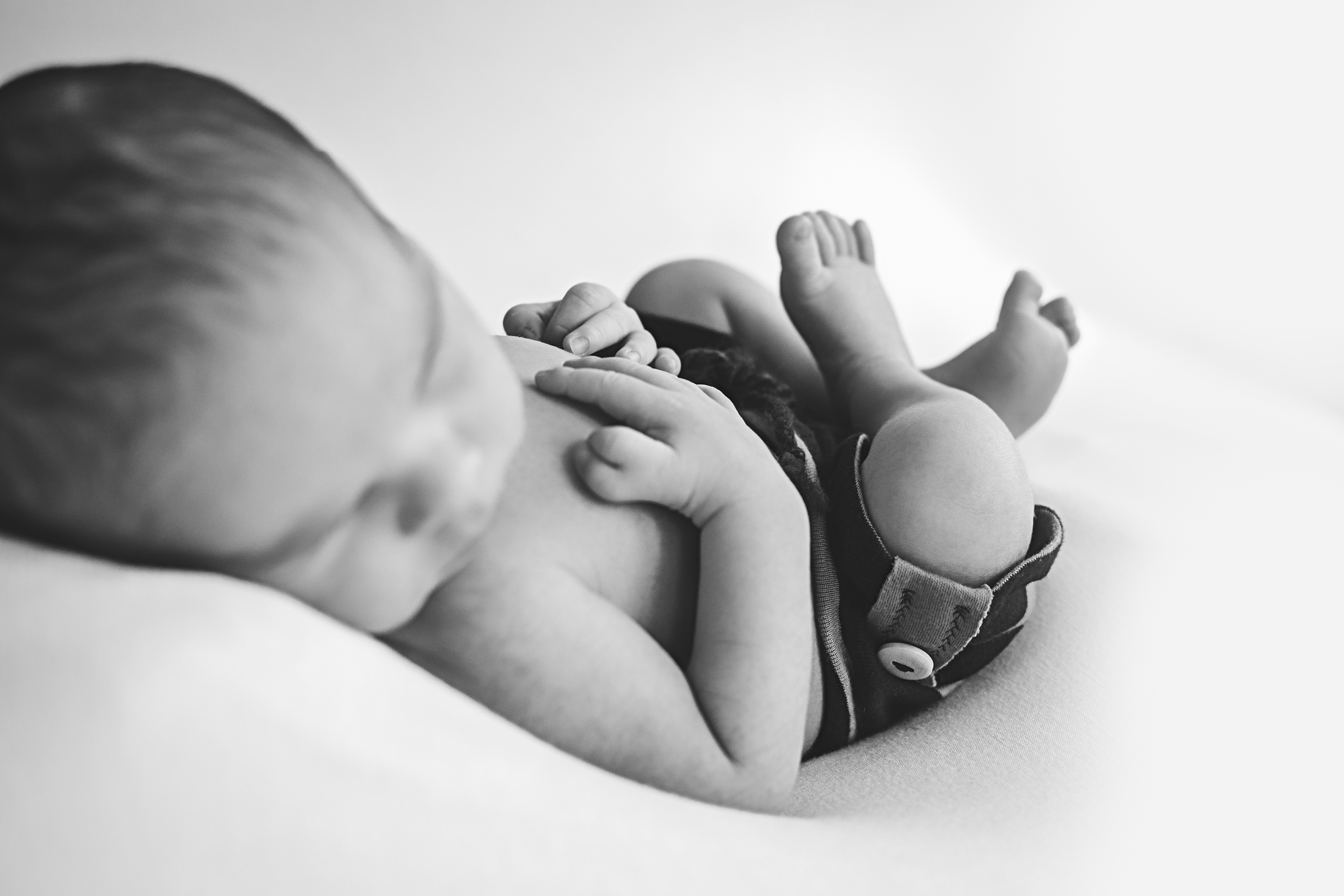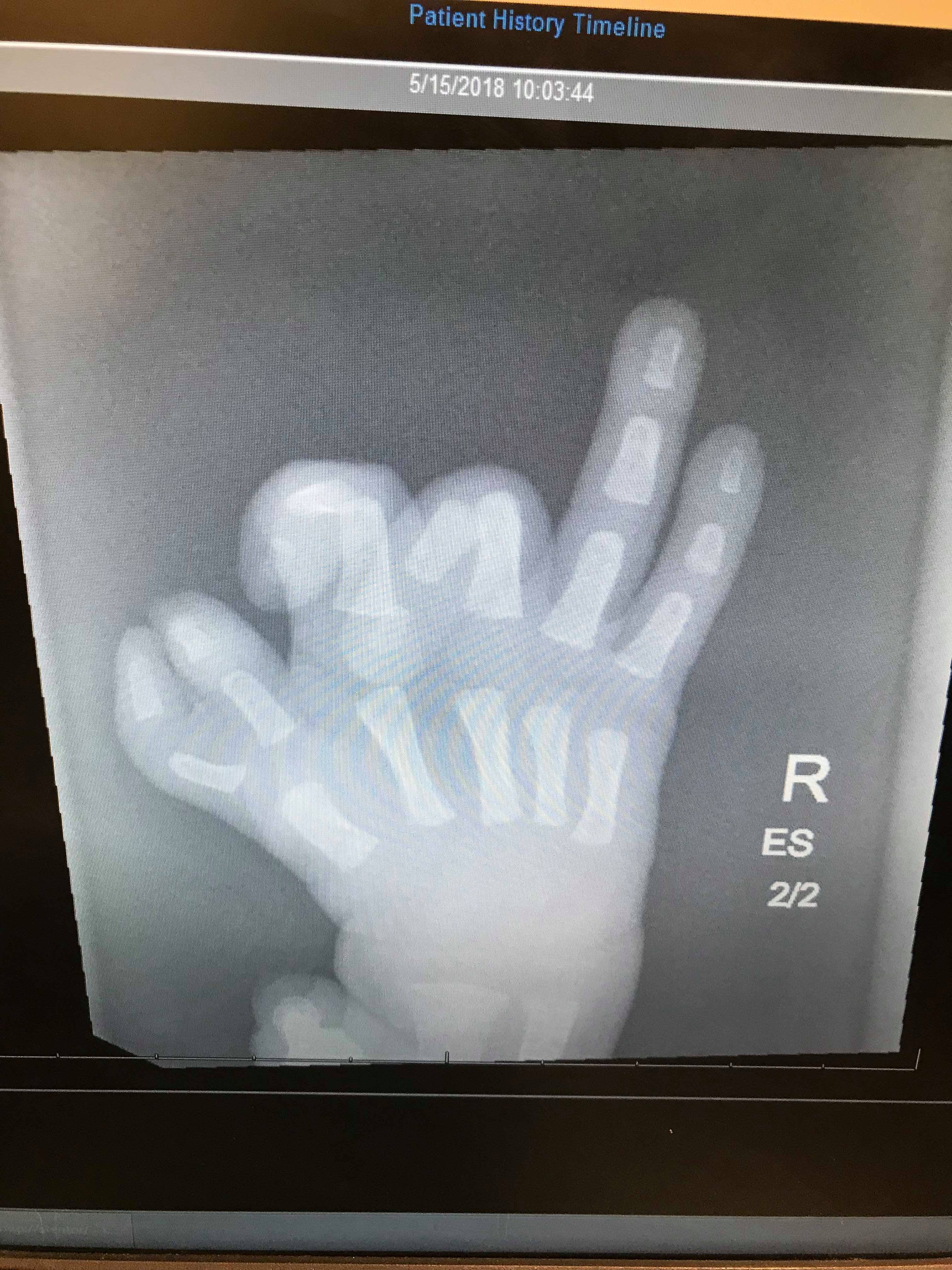
I was 18 weeks pregnant when my high-risk OB (advanced maternal age and conceived by IVF) saw it on the ultrasound. He pointed to the screen and said, “This thumb appears to be wider than the other one. It’s likely an extra digit.” I sat quietly for a minute trying to process what he said. An extra digit? Why? How?
It turns out that one in 350 children are born with an extra finger or toe. Polydactyly occurs around the sixth week of gestation and forms when a single finger splits into two. Most occurrences are sporadic and don’t have an apparent cause, while others are due to a genetic defect or underlying hereditary syndrome. Extra digits are usually smaller and abnormally developed than normal and can be made up of skin and soft tissue, bone but no joint or all three.
In my son’s case, he was born with an extra thumb on his right hand. It was hard to get a good picture of it past the 18-week mark as he took up more space in my stomach and refused to cooperate when we wanted a closer look at it. The doctor said it appeared to be an isolated case since no other issues were detected in the womb. Of course I was curious to know more and went straight to Google. BIG MISTAKE. I immediately freaked out at all of the possible conditions or syndromes tied to polydactyly. I feared the worst and started questioning everything. Did I do something wrong? Was it a result of the in-vitro we did to conceive this little miracle? Was he going to have one of these syndromes I read about?

Every doctor we saw during pregnancy and postpartum didn’t seem too concerned it was anything more. We were referred to an orthopedic surgeon and scheduled an appointment at just three weeks old to learn as much as we could and what’s involved with any potential surgery. She took X-rays and said this type of surgery is her most common in her patients. In a year, we will go back for more X-rays to determine which is the more complete thumb. I was just beginning to relax a little when she ordered blood work, an ultrasound of his bladder and kidneys, and an echocardiogram of his heart to rule out any related health issues. The tears flowed down my face as I feared the worst and all my Google searches came to mind.
The next week we made several trips to the hospital for tests. My sweet little boy was the one getting an ultrasound this time at just three weeks old. Then they put tiny little patches on his body to check his heart. I sat in awe with tears running down my face. Finally, a nurse poked him with the tiniest of needles to withdraw blood from his arm. He took it like a champ. Me — not so much.
The orthopedic surgeon’s office called a few days later to give us the results. I knew from the tone of her assistant’s voice on my voicemail that they found something. Otherwise, why wouldn’t she have given us the all clear right then and there? Instead, she asked us to call her back. I looked at the clock, and it was a few minutes before five. I feverishly dialed the office and spoke to the assistant. I was shaking so badly I could barely write down what she was telling me. There was something potentially wrong with my son’s heart. I don’t remember much of the conversation but scribbled a few things down and immediately called my husband. His last words before we hung up the phone were, “Please do not Google this.” He called the doctor to get more credible information. It took two days, but she called back and said we would need to come back in a year because at this point it’s just potentially an issue. There was nothing to do now — we needed to let his little body and heart develop and check back again to see if in fact, he does have a bicuspid aortic valve, which is a form of heart disease where two of the leaflets of the aortic valve fuse, resulting in a two-leaflet valve instead of the normal three-leaflet valve or tricuspid.
Her diagnosis wasn’t enough for me. I requested a referral to a pediatric cardiologist and got an appointment right away. Before the doctor even started talking, I had tears rolling down my face. And then tears of joy. She said this was the best-case scenario if you have a heart problem — this is the one you want to have. She reiterated we will need to wait and see if it truly is a bicuspid aortic valve issue, but until then, we shouldn’t worry. In similar cases, children with this same health diagnosis aren’t typically bothered by this until later in life — 40 or 50 years later. He would need to monitored throughout his life, but he wouldn’t be limited in activity or sports. So we wait.
Hard to know what the future holds for this little guy’s health, but it’s a much better prognosis than we feared. The hard part now is explaining his extra thumb to everyone he meets. Most people are in awe when they look at it. But, we know it’s just one of the many things that makes our little boy so special.

















Wow Kerry! I didn’t know you were such a beautiful writer. My prayers are with you, Sean and Case that you can look past any worries with your darling baby boy! These issues are common, quick and will be easily forgotten as Case grows older and more active! The real issues to worry about are when the girls and cars come into the picture, for both Cole and Case!
Thank you, Angie!
Big hugs to you! This was a brave article and you reached many in a positive way; guaranteed. Me, one of them. Let’s get together for lunch one of these days!
Hey Kerry! My husband is a very healthy and athletic 29 year old with a bicuspid aortic heart valve! Although he wasn’t born with an extra digit, he does have a dilators aortic valve. It’s something they monitor every year by EKG and an Echo, and he’ll occasionally get an MRI. He played all kinds of sports growing up (mainly baseball), and he’s competed in a tough mudder, a Spartan sprint race, and runs for excercise occasionally as an adult. We also have two very beautiful healthy children! He did have to wear a chest guard when playing baseball, and he has to be careful how strenuous his exercises are, and I did have to go for a fetal echo while pregnant to check out children’s hearts, but he has otherwise lived a perfectly normal healthy life so far! I hope this had offered you some comfort! We will be praying for you and for your son. Even after 29 years of great reports from his cardiologist, his mother still gets choked up and nervous with each yearly appointment.
Thank you so much for your comment. This makes me feel a lot better! I am a worrier so I will never feel entirely comfortable but hearing others stories does help. Thanks again!